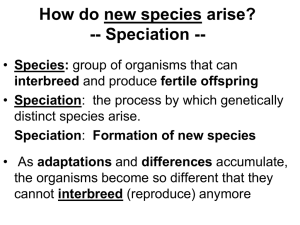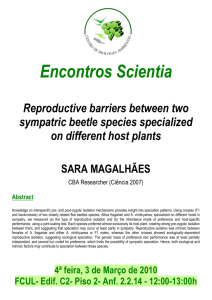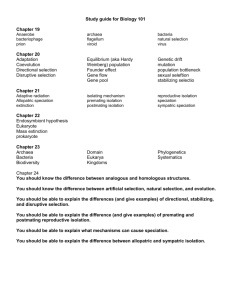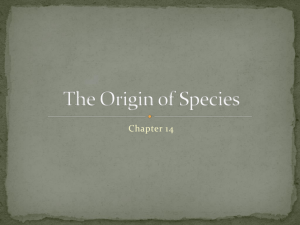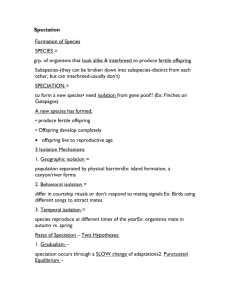How do new species arise? -- Speciation --
advertisement
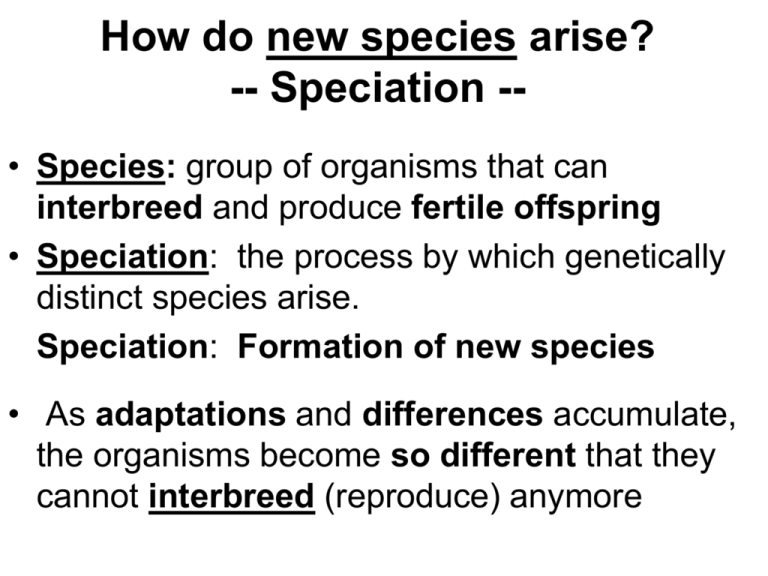
How do new species arise? -- Speciation -• Species: group of organisms that can interbreed and produce fertile offspring • Speciation: the process by which genetically distinct species arise. Speciation: Formation of new species • As adaptations and differences accumulate, the organisms become so different that they cannot interbreed (reproduce) anymore Speciation: Formation of New Species • • • • If a population becomes separated, or a group of individuals becomes isolated, they may change over time. They may change so much that they cannot interbreed anymore with the members of the original population. Reproductive Isolation. Reproductive Isolation is the first step towards the formation of a new species What influences reproductive isolation: 1. Geographic Isolation (Allopatric Speciation) 2. Behavioral Isolation (Sympatric Speciation) 3. Temporal Isolation (Sympatric Speciaton) 1. Geographic Isolation • A physical barrier separates (splits) the original population • As time passes, the environment may selects for different traits and the 2 populations become genetically different AND can’t reproduce • Barriers: Rivers, mountains, bodies of water Kaibab and Abert Squirrels Kaibab Abert - The Kaibab squirrel (Sciurus aberti kaibabensis) became geographically isolated from the common ancestor about 10,000 years ago. - Its closest relative is the Abert squirrel (Sciurus aberti aberti) - They live in opposite sides of the Grand Canyon Wrasses: Original population split up when the isthmus of Panama was formed - 2 species now, one on each side of Central America 2. Temporal Isolation (Time of Reproduction) • Groups of individuals reproduce at different times. The genes of the 2 groups do not mix. • It is happening now with some of the migratory birds that decide not to migrate. • The birds that do not migrate start mating before the migratory ones come back. • Eventually they might become different enough that they may not recognize each other. Robins usually migrate south to warmer climates. Some are not migrating. They reproduce before the migrating individuals return. 3. Behavioral Isolation (Reproductive Behavior changes) • If 2 populations have different courtship behaviors, they will not be able to interbreed • Different songs (birds) or mating calls (frogs) • Different scents (smells) • A simple mutation can cause a change Types of Speciation • Allopatric – the evolution of geographically isolated populations into distinct species. • Sympatric - the process through which new species evolve from a single ancestral species while inhabiting the same geographic region
